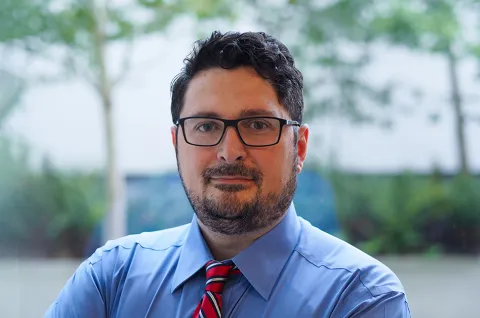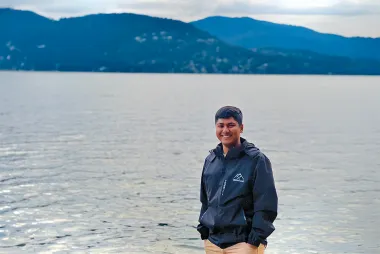“My work in AI and machine learning represents the culmination of years spent at the intersection of science, technology, engineering and mathematics, striving to create more efficient and sustainable solutions for our society.”

- Program:
- Campus: Vancouver
Education: MSc (University of Novi Sad, Serbia), PhD, Mining and Minerals Engineering (Virginia Tech)
What led you to engineering, and to your current work in AI and machine learning?
At the age of 19, I started a challenging but very rewarding journey, working full-time as an electrical technician while simultaneously attending university and completing my first degree.
My focus during that period was on process and energy systems, which included participating as a principal designer, consultant and project manager on over 100 projects in power generation, transmission and distribution sector.
I loved the work and continued on doing a master’s degree, this time with a focus on process systems in environmental engineering. My master’s thesis looked at recycling waste electronic and electrical equipment. It connected to the work I was doing – for example, when you have large transformers at the end of their useful lives, how do you recycle them?
In 2007, I moved to the US to do a PhD in the mining and minerals engineering department at Virginia Tech doing research on carbon capture and storage.
During my time at Virginia Tech, I was part of some very exciting projects. Our team secured significant funding from the US Department of Energy to deploy geological carbon sequestration – we successfully completed one of the first field validation studies of geological carbon sequestration in unmineable coal seams.
My journey through various fields of science and engineering gradually led me to the fields of machine learning and AI.
The transition was a natural progression, born from a desire to harness cutting-edge technology to solve complex challenges associated with energy production and extraction of natural resources. Today, my work in AI and machine learning represents the culmination of years spent at the intersection of science, technology, engineering and mathematics, striving to create more efficient and sustainable solutions for our society.
Why is this research important?
Production of minerals and metals is a critical step in the transition to a more sustainable economy.
Finding more efficient, faster and sustainable ways to discover and extract these commodities can accelerate that transition.
My work on using AI to locate areas of high mineral potential can speed up the process from discovery to production. Many mining companies spend upwards of 10-15 years to discover a viable deposit, which also comes at great costs. This work could help expedite the process, which would then allow us to get the minerals we need to develop more affordable green technologies much faster.
The research on autonomous cyber-physical systems has a lot of applications, given that mine sites are often located in remote and extreme locations.
We already see this in Australia where there are operators at control centres in large cities like Perth, controlling remote trucks at mine sites thousands of kilometres away in the outback. My work takes this one step further by using advanced 5G networks and AI, which will enable the trucks to operate more autonomously and with improved privacy and security.
Why should students consider mining engineering?
Mining engineering is such a broad field that it's possible to take your career in many different directions.
As a student, you not only learn the foundations in the domain of mining but also delve into areas you might not immediately associate with mining, such as computer science, programming, automation and control, advanced energy systems and robotics, among many others. Our graduates find themselves well-prepared for a wide range of career paths, including opportunities in consulting, financial institutions, government, the IT sector and beyond, showcasing the versatility and demand for skills acquired in this field.







